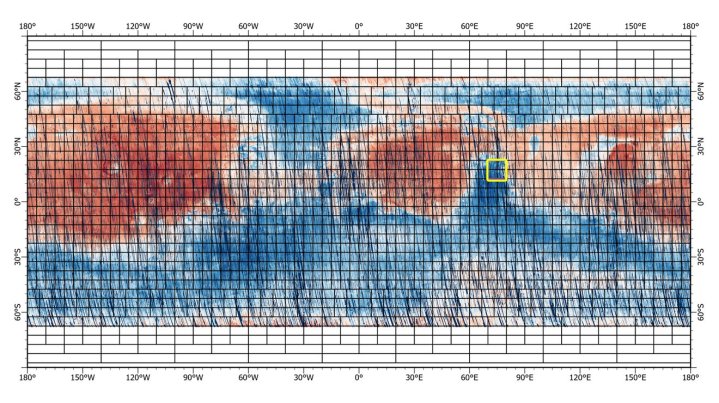The rainbow-hued images might look like some kind of digital art, but in fact, they are maps of Mars, taken using the Compact Reconnaissance Imaging Spectrometer for Mars, or CRISM, an instrument on board NASA’s Mars Reconnaissance Orbiter (MRO).
This spacecraft has been in orbit around Mars since 2006, taking images of the planet using its cameras such as HiRISE and also gathering spectrometer and radar data. CRISM is a spectrometer, meaning it splits light into different wavelengths to see what an object is made of. Different colors in the different maps below represent particular minerals on the Martian surface, allowing researchers to look at the planet’s geology from orbit.
NASA recently released the first part of a highly detailed map of almost the entire surface of Mars, in the form of a 5.6 gigapixel image in 72 colors. This was created from over 50,000 segments, each a strip around 330 miles in length and six miles wide, which were stitched together to create the final map. This map shows the overall reflectiveness of each patch of the Martian surface, with redder portions of the map being places where there is lots of bright red dust, and darker portions being rockier and less dusty.

There will be batches of CRISM data corresponding to each individual tile of the map, like those shown in the image at the top of the page, released over the next six months until the survey is complete. The total coverage of CRISM data will include 86% of Mars’s surface, providing an invaluable map of where key minerals are located. From this, researchers can both understand more about the history of water on the planet and identify new targets for scientific research or even help choose landing sites for rover missions.
“It’s effectively a whole new data set that will fuel a second wave of discoveries about Mars’ surface composition,” said CRISM’s principal investigator Scott Murchie in a statement. “In fact, one of the objectives of the next MRO extended mission is for its HiRISE camera to go back and image in color the hundreds of new high-science priority spots we’re finding in the map — spots that haven’t been imaged at high resolution because their importance wasn’t known.”
There will also be another map released later this year showing the location of iron-bearing minerals, which are helpful to understand the history of water on the planet and could even help in the search for evidence of ancient life there.
“The CRISM investigation has been one of the crown jewels of NASA’s MRO mission,” said Richard Zurek, the mission’s project scientist at NASA’s Jet Propulsion Laboratory. “Analyses based on these final maps will provide new insights into the history of Mars for many years to come.”
Editors’ Recommendations

